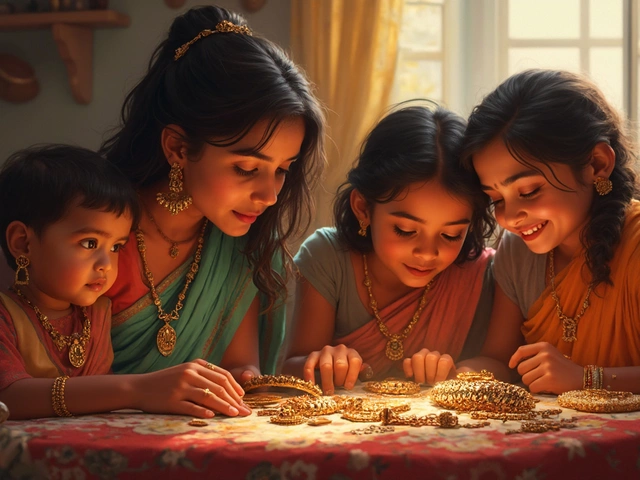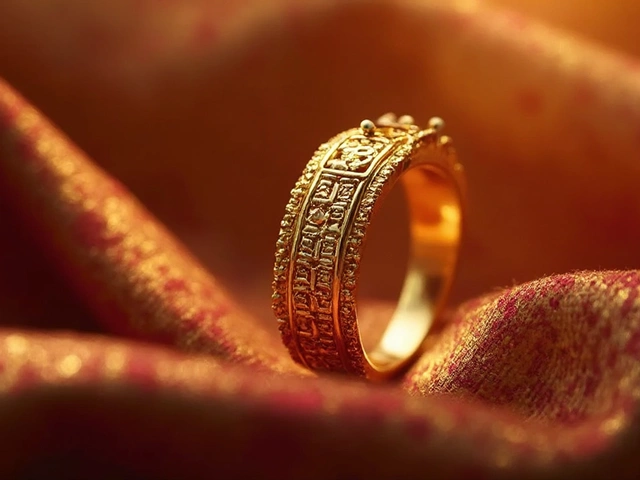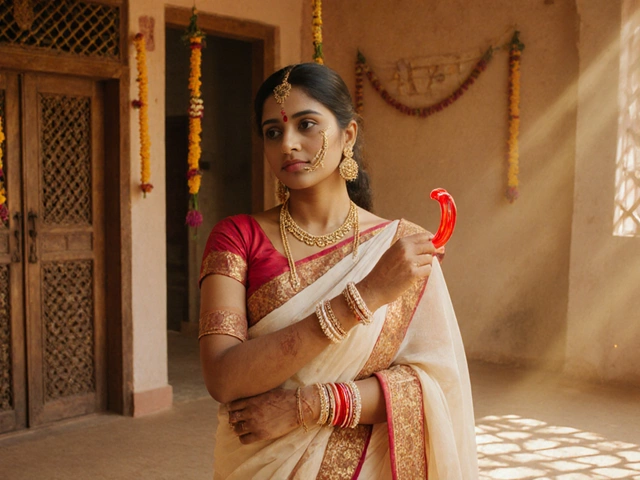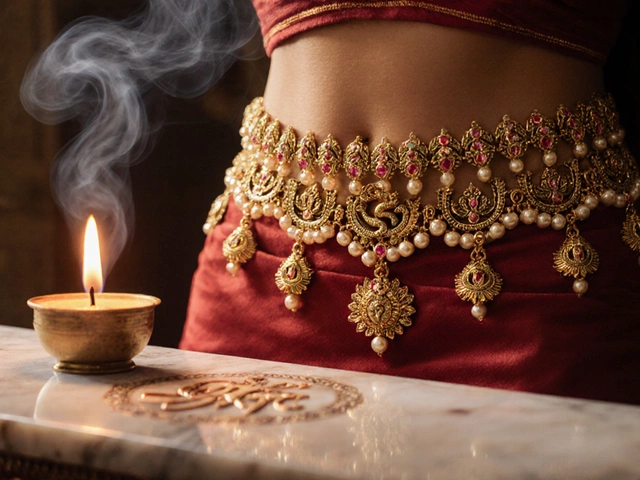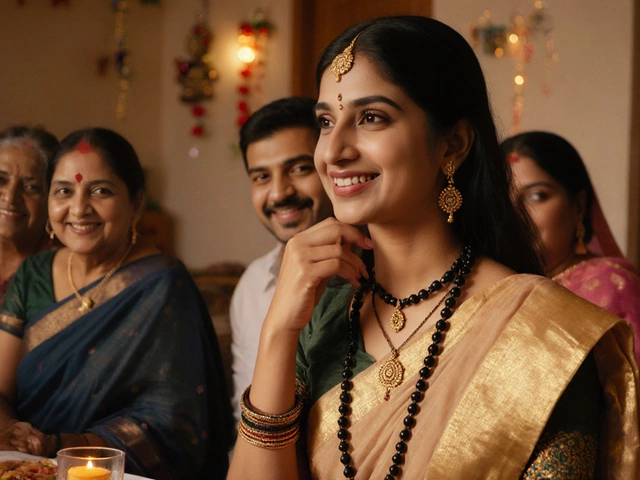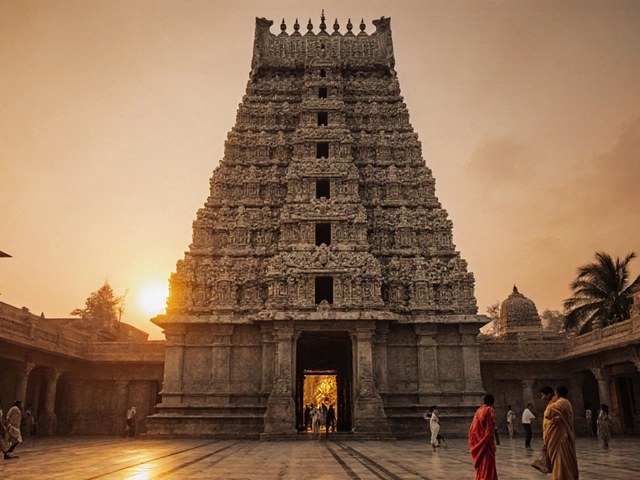
In the world of fashion, few items straddle the line between function and statement as effortlessly as the purse. Yet, the debate on whether it is a mere accessory lingers. Purses have traversed centuries, evolving from basic pouches to intricate symbols of personal style. In India, where heritage meets modernity, the role of the purse is especially interesting.
From traditional bazaars in bustling cities to high-end boutiques, purses convey more than just one's taste; they tell stories of history, culture, and innovation. They are not just carriers of essentials but reflect lifestyles and values. So, is it just an accessory? Or is it something more profound—an extension of one's identity?
- The Historical Significance of Purses
- Purses in the Indian Fashion Context
- Cultural and Regional Variations
- The Balance Between Utility and Aesthetics
- Choosing the Perfect Purse
The Historical Significance of Purses
The history of the purse traces back to ancient civilizations. As early as the 14th century, both men and women used purses, but their purposes were distinct from today's stylish allure. Initially, these items served purely practical purposes. In medieval Europe, these small bags were called 'pouches' and were often elegantly embroidered to be worn as symbols of wealth and status. They frequently contained coins or small personal items, emphasizing their functionality over fashion. Over time, the purse evolved alongside changing clothing trends, adapting to new styles while retaining its role as a trusty vessel for carrying essentials. The significance of these historical artifacts is undeniable, as they offer insights into the lifestyles and social structures of bygone eras.
Interestingly, the 16th century saw an evolution in design and usage. More materials became available through global trade routes, allowing for a diverse range of purses to emerge. Beaded purses became fashionable during the period, especially among the nobility. Beading allowed for intricate designs that communicated a person's taste and position within society. It wasn't until the 18th century, with the rise of fashion consciousness, that the purse began its transformation into a fashion statement. This was when women’s fashion started to shift towards more form-fitting garments, making the bulky pockets obsolete and ushering in the handbag as an essential item of clothing. Historical records from fashion houses of that era illustrate a clear intention to turn these carriers of everyday necessities into something stylish and emulative.
Symbolism and Cultural Evolution
Purses have served as powerful symbols across cultures. In some societies, they signifies wealth and power, while in others, they are tokens of simplicity and functionality. The significance of the purse in different cultures underscores its versatility and importance. For example, in 19th century Europe, a purse was not just a functional item but a reflection of burgeoning gender roles. As women ventured more into public life, accessible storage for personal items became necessary. This fundamentally shifted the narrative surrounding purses, intertwining them with the social dynamics of any given period. It was during this time that purses became essential for women, indicating not just societal shifts but personal independence.
"A handbag is never just a handbag. It’s a reflection of our history, a marker of our economy, and a bellwether for our society's evolving dynamics." - Style Scholar Mary Thompson
Today's diverse range of purses offers a nod to its storied history. From the intricately decorated clutches of the Renaissance to the oversized totes of the modern era, each style speaks to unique periods of innovation and cultural shifts. Aided by technological advancements, design techniques have allowed purses to be crafted from an array of materials, offering modern consumers seemingly endless choices. The evolution continues as fashion increasingly focuses on sustainability, with recycled materials introducing a new chapter in the history of the purse. This enduring item not only carries our belongings but echoes the rich tapestry of human history through its ever-evolving design and purpose.
Purses in the Indian Fashion Context
India, with its fashion that is as diverse as its culture, provides a fascinating backdrop to explore the role of the purse. The country’s fabric of fashion is woven from countless threads of tradition, modernity, and regional uniqueness. In bustling metropolises like Mumbai and Delhi, one observes a blend of international high fashion with local flair. Here, purses become more than practical accessories; they transform into profound statements of style. Urban consumers often opt for globally recognized luxury brands that offer a wide array of purses, from classic leather to modern synthetics, reflecting a desire for cosmopolitan appeal.
Meanwhile, in regions like Rajasthan and Gujarat, purses often tell stories of rich heritage. Embellished with traditional embroidery or mirror work, these purses reflect the artistry and cultural narratives of their places of origin. Street markets in cities like Jaipur present a tantalizing array of choices where functionality and aesthetic allure meet. An interesting fact is that Indian women often look for purses that blend traditional designs with modern efficiency, thus paying homage to their rich culture while embracing the speeds of modern life. This dynamic coalescence of old and new makes purses a vibrant component within India’s thriving fashion industry.
The purse market in India has been evolving at a notable pace. With the ever-growing middle-class economy, there's been a significant rise in demand, not only for functional aspects but also for fashion-forward designs. Influential Indian designers have been champions of this trend, adding regional craftsmanship and motifs to their purse designs. According to the Fashion Accessory Market Insights of 2024, there was a 20% increase in purse sales in India reflecting the trend. This illustrates a growing interest in personalized style statements. Local artisans have also begun catering to this demand, creating unique and bespoke items that honor India's rich tapestry of cultural icons and craftsmanship.
According to fashion designer Anita Dongre, "Purses in India are more than accessories. They are a blend of functionality and cultural heritage, capturing the spirit of every woman who carries them."
As fashion continues to globalize, the influence of western trends is unmistakable, yet Indian fashion retains its distinctiveness through its commitment to personal and cultural storytelling. Many in India believe that a purse completes an outfit, serving as an essential element that can elevate a look. Consequently, one sees a myriad of styles—from sleek clutches used in evening events to larger tote-types preferred for daily errands. As the choices expand, the connection between a purse and individual identity grows stronger. Thus, the Indian fashion landscape continues to redefine the boundaries of what a purse signifies, ensuring its prominence not just as an accessory but as a crucial element of personal fashion narratives.
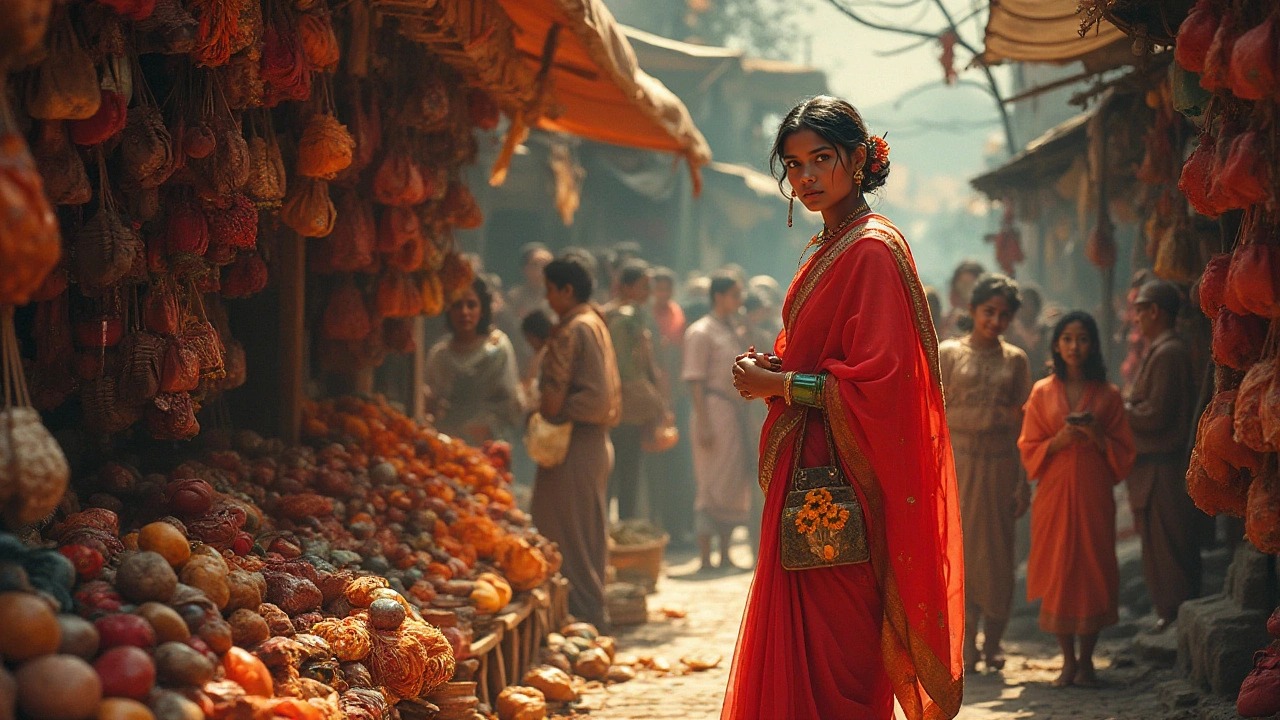
Cultural and Regional Variations
The realm of fashion in India is as diverse and vibrant as the country itself, and purses play a pivotal role in displaying this rich tapestry of culture. A purse isn't simply a utility piece here; it's an emblem of cultural identity and personal taste. Different regions offer unique styles, each telling a story of its own. From the intricate embroidery of Rajasthan to the minimalist leather crafting in major metropolitan areas, the style of purse one chooses often reflects their roots and values. In India's southern states, where tradition melds with contemporary aspirations, the age-old craftsmanship of Kancheepuram silk is echoed in the design of purses, adding a local flair that is both historical and fashionable.
Among urban fashionistas in cities like Mumbai and Delhi, global trends make their presence felt, making Western-inspired designs equally popular. However, these imported styles often get an 'Indian twist'—whether it's by infusing them with local materials or pairing them with ethnic wear. It’s no wonder that the Indian fashion scene is renowned for its eclectic mix. According to a report by the Fashion Design Council of India, "The burgeoning middle class has pushed demand for luxury purses, but there remains a deep-rooted affinity for traditional designs that honor Indian heritage." This duality of appreciating both modern and traditional roots is what defines the cultural narrative around purses in India.
A typical Indian woman might have a collection of purses that cater to different aspects of her life and identity. She could have an elegant clutch adorned with zari work for family weddings, a simple yet stylish tote for everyday errands, and perhaps a chic, branded sling for her office runs. This variety represents more than fashion—it reflects the multitude of roles she plays and the cultural settings she navigates. It's a delicate balancing act to maintain personal style while embracing cultural nuances, yet Indian fashion accessories manage to achieve this with aplomb.
In some areas, patterns and motifs carry more than just aesthetic appeal; they serve as meaningful symbols. Embroidery often showcases peacocks or lotuses, which have significant cultural connotations in India. These designs aren't merely decorative; they’re a nod to tradition, carrying forward stories told through generations. Yet, while traditional elements hold sway, modern concepts of sustainability are also influencing choices. For instance, the increasing shift towards eco-friendly materials hasn’t gone unnoticed, with more artisans and designers embracing sustainable practices.
A study found that younger consumers are particularly mindful of environmental impacts and prefer brands that exhibit social responsibility. This shift is evident in the rise of upcycled materials in the production of purses. Statistics show that about 40% of young buyers in urban sectors prefer sustainable options. This change is slowly influencing even rural markets, where eco-consciousness is gaining ground due to improved awareness.
The Balance Between Utility and Aesthetics
Understanding the dual purpose of a purse in the fashion world is a fascinating endeavor. Surprisingly, these essential items have evolved far beyond their original utilitarian role, becoming an intrinsic part of personal style. This transition highlights the delicate dance between functionality and visual appeal—both crucial aspects when considering what makes a fashion accessory truly remarkable. In contemporary times, a purse is expected not only to carry necessities like keys and phones but to reflect the owner’s unique flare and personality. Often, it serves as the statement piece in a fashion ensemble, commanding attention and accentuating the wearer’s overall look.
This interplay becomes particularly interesting in regions like India, where cultural nuances shape style preferences. The vast array of purse designs available in the Indian fashion market ensures that individuals can express themselves while catering to practical needs. Here, a simple clutch with intricate embroidery may speak volumes about the rich heritage it represents, combining a nod to tradition with a modern twist. A purse is not merely an accessory; it signifies a harmonious blend of design and practicality.
When we delve into the mindset of consumers, it's evident that this balance is no accident. Research indicates a growing desire for accessories that can transition effortlessly from day to night, work to leisure. In a study conducted by The Fashion Institute of Technology, 68% of respondents highlighted functionality as a top priority when selecting a purse. Yet, equally important was the allure of style, as 74% admitted the appearance also significantly affected their choice.
"A good design is not just an excellent appearance. It's also about a well-functioning product that fits in with everyday life." - Alicia Rocha, Fashion Designer
In recent years, there has been a noticeable shift towards versatile designs that encapsulate both elements. Convertible purses, with adjustable straps or detachable components, have revolutionized this niche market. These allow the user to reconfigure the bag for different occasions, effectively doubling its utility.
On the practical side, designers are diligently working on innovative solutions like lightweight materials that do not compromise durability or style. Such advancements ensure that today’s purse doesn't weigh heavily, both physically and stylistically, on its carrier. Equipping a purse with cleverly concealed compartments and chic aesthetics is now essential, doing justice to its role as a staple in the world of fashion accessories.
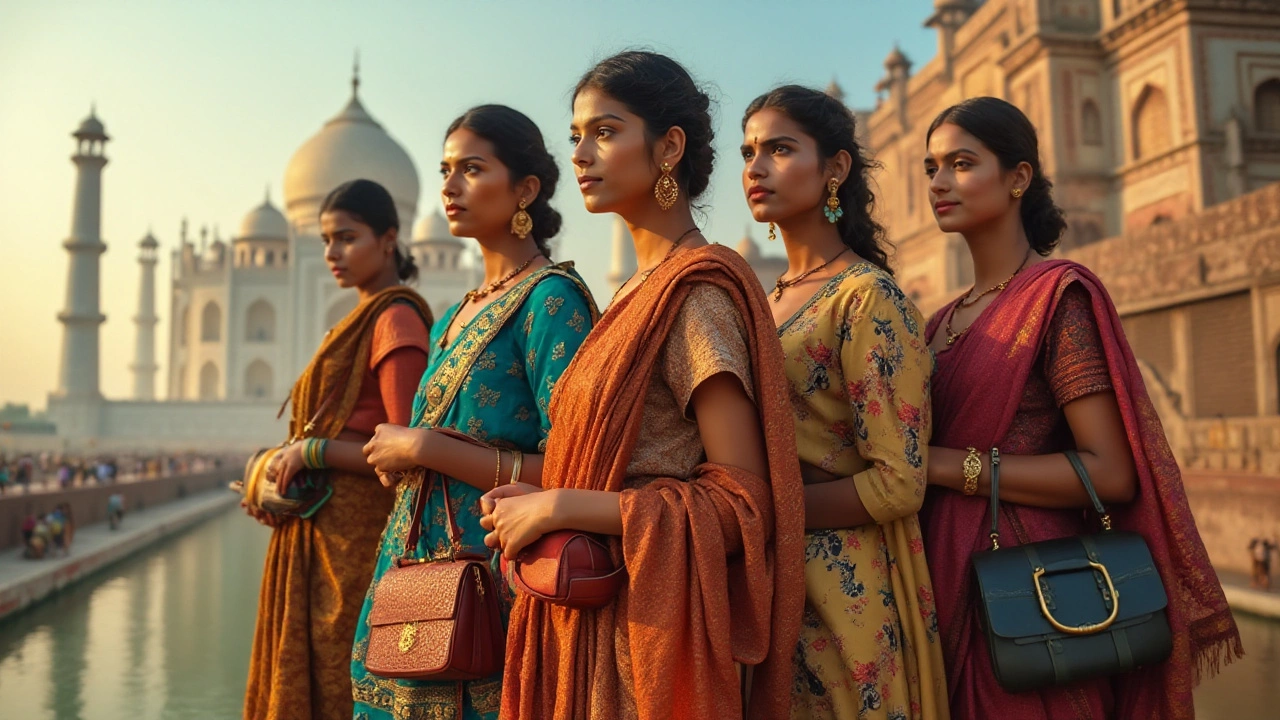
Choosing the Perfect Purse
Picking out the perfect purse is a delightful challenge, akin to treasure hunting of sorts—it requires study, attention, and a sprinkle of intuition. Understanding what you need in a purse is the first step, as it must align with your lifestyle and daily activities. For instance, a bustling day requires space for a planner, keys, a makeup pouch, and perhaps even a small book for those quiet moments. Thus, examining your everyday essentials is crucial, which will be housed in this accessory. Consider also the climate and its influence on your choice of material. Leather, though classic and durable, may not always age well in extremely moist or hot conditions, unlike canvas or other synthetic materials.
One cannot ignore the weight of digital love—fabrics and hues that photograph well are often favored, aligning with the social media-driven fashion culture we witness today.
As renowned stylist Rachel Zoe puts it, 'A purse signifies more than just style; it's the compass of your everyday adventures.'Understanding color pallets is also key. Neutral shades like black, brown, and tan are skilled chameleons, adapting to various looks with innate ease. Meanwhile, a bold red or yellow purse can serve as a striking statement piece, injecting vivacity into an otherwise subdued wardrobe.
The size of the purse holds vital importance—for not only does it determine what you can carry, but it can alter the perceived silhouette of the wearer. A petite figure might feel overwhelmed by an overly large tote, just as a tall individual may find a larger bag provides harmony. Embrace pockets and compartments, which offer not just organizational advantage but are pocket-sized pieces of joy once you harness their power—everything from spare change to last-minute receipts finds a cozy home. Finally, when selecting a purse, balance your individualistic style with key fashion trends, ensuring longevity in your investment.
Let us emphasize the importance of quality. A meticulously crafted fashion accessory will serve you well over the years, with stitch perfection and hardware resilience being hallmarks of quality. Investing in reputable brands can offer assurance; however, evaluating independent, local artisans can also be rewarding, providing unique pieces with character and stories of their own. Here's when trying on a purse akin to trying a pair of shoes adds value. Find the strap that fits, adjust the length, and ensure it doesn’t slip—functionality boosts interest and credibility.
Consider analyzing stats to understand trends. Suppose studies indicate that 75% of individuals change their purses over seasonal transitions while 60% prefer eco-friendly textile options. Such insights can influence decisions, marrying aesthetics with ethics. Navigate your selection journey with confidence, as picking the right purse elevates your entire being, blending purpose with the undeniable charm of style.

